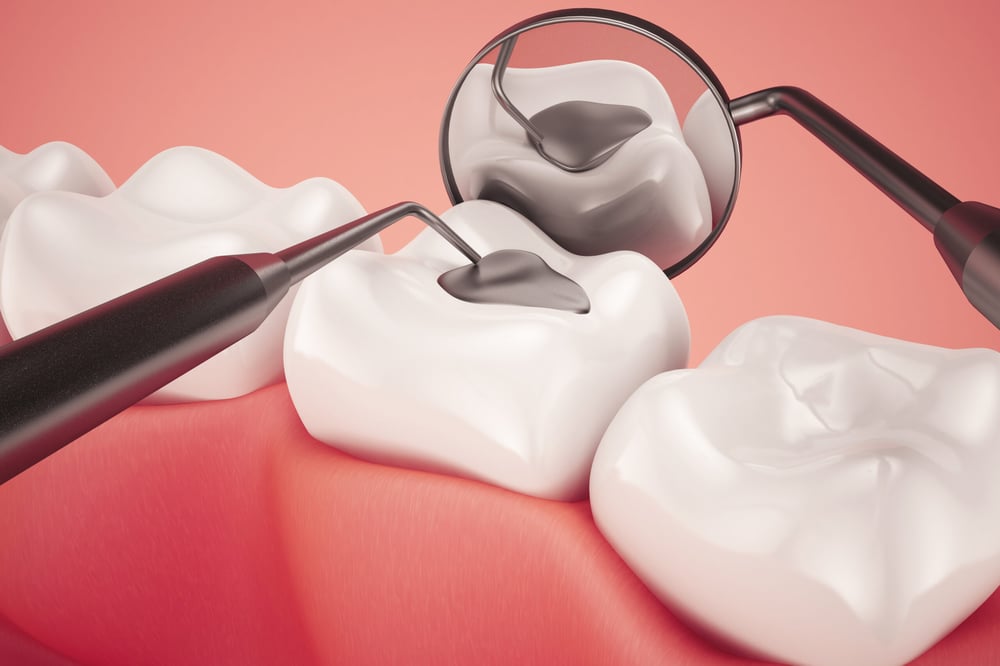Tooth decay is one of the most common dental issues faced globally, and in a bustling city like Dubai, dental aesthetics and oral health go hand in hand. When cavities strike, the typical solution is a tooth filling—an effective and quick treatment that helps restore the tooth’s function and structure. But if you’ve ever looked into dental procedures in the UAE, you might have found yourself wondering: Does tooth filling cost vary by material? The short answer is yes. The long answer, however, involves understanding the different types of materials used, their benefits, drawbacks, and how they influence the overall Tooth Filling Cost in Dubai.

Types of Tooth Filling Materials
There are several materials used for dental fillings, each offering unique characteristics in terms of appearance, durability, and cost. Here’s a breakdown of the most common types:
1. Amalgam Fillings
Amalgam has been used in dentistry for over a century. Made from a mix of metals, including silver, tin, and mercury, it’s known for its durability and longevity. Amalgam fillings are particularly suited for back teeth that endure a lot of pressure during chewing. While they’re cost-effective, their silver appearance makes them less desirable for people concerned about aesthetics.
2. Composite Resin Fillings
Composite resin is a tooth-colored material that blends seamlessly with natural teeth. It's a popular choice for visible teeth and offers a more natural appearance compared to metal fillings. While aesthetically pleasing, composite fillings may not last as long as amalgam and could require more maintenance over time.
3. Ceramic Fillings
Made from porcelain, ceramic fillings are another aesthetically pleasing option. They resist staining better than composite resin and can last for many years. However, they typically require more complex procedures and can be more expensive due to the high-quality material and time-intensive process involved.
4. Gold Fillings
Gold fillings are extremely durable and can last for decades with proper care. However, they’re also the most noticeable and often considered the most expensive option. Their use is less common in recent years as patients increasingly prefer tooth-colored alternatives.
5. Glass Ionomer Fillings
These fillings are typically used for children or in non-load-bearing areas. While they release fluoride, which can help protect the tooth, they are not as durable or aesthetically pleasing as other materials.
Factors Affecting Tooth Filling Cost
The material used for a filling significantly impacts its cost, but it's not the only factor. Here are a few others that contribute to the variation:
1. Tooth Location
Fillings on molars, which are harder to reach and endure more pressure, might cost more than those on front teeth.
2. Cavity Size and Depth
Larger or deeper cavities require more filling material and possibly additional work, such as shaping or layering, which can increase the cost.
3. Technology Used
Some clinics use digital imaging and laser techniques to enhance precision, which might add to the overall expense of the procedure.
4. Aftercare and Maintenance
Follow-up appointments, polishing, and potential future repairs can also influence long-term cost, depending on the type of filling chosen.
Aesthetics vs. Longevity: A Delicate Balance
Choosing the right filling is often a balance between appearance and longevity. While composite and ceramic fillings offer a natural look, they may require more frequent replacements. On the other hand, amalgam and gold are built to last but are less visually appealing. Your lifestyle, diet, and personal preference should guide your decision, especially if aesthetics are a top priority.
Filling Materials and Insurance Coverage
Another often overlooked aspect is dental insurance. Some materials might be fully or partially covered under standard policies, while others, especially those considered cosmetic like ceramic or gold, might not be. It’s important to check the details of your coverage to avoid unexpected costs.

Why the Right Material Matters
Beyond just cost, the right filling material can affect your overall oral health and comfort. A mismatched material may wear out unevenly, cause sensitivity, or require premature replacement. Consulting with a qualified dental professional to evaluate your specific needs and oral health condition is essential for long-term results.
Dubai’s Dental Landscape
Dubai’s healthcare sector is known for its modern facilities and high standards, and dental care is no exception. With a variety of clinics offering advanced treatments, residents and visitors have access to a wide range of options when it comes to tooth fillings. Whether you prioritize aesthetics, durability, or affordability, you’re likely to find a treatment plan that fits your needs.
The key is to do your research, ask questions, and consider what matters most to you. Is it the appearance of the filling? The longevity? Or perhaps how it feels during daily activities like eating and talking? These considerations are just as crucial as the material itself.
Final Thoughts
The material you choose for your tooth filling does more than just patch up a cavity—it plays a role in your comfort, appearance, and long-term oral health. From affordable and durable amalgam to aesthetic and stain-resistant ceramics, each option has its strengths and trade-offs. Knowing the characteristics of each can help you make a well-informed decision, especially in a dynamic and quality-driven market like Dubai.
So, Tooth Filling Cost Dubai indeed varies based on the material, but the best choice ultimately depends on your priorities and dental goals. Choosing the right material not only saves you money in the long run but also ensures a confident, healthy smile.

